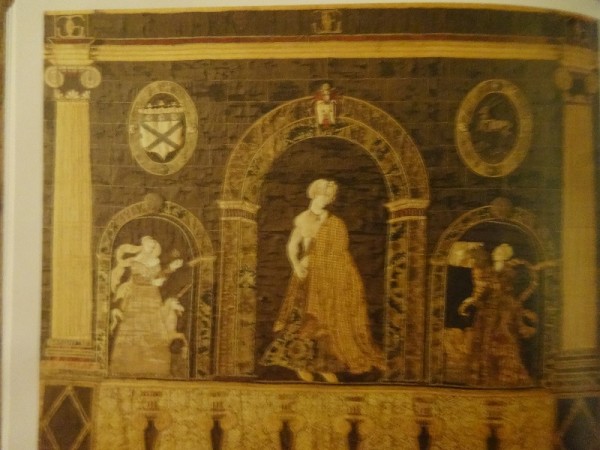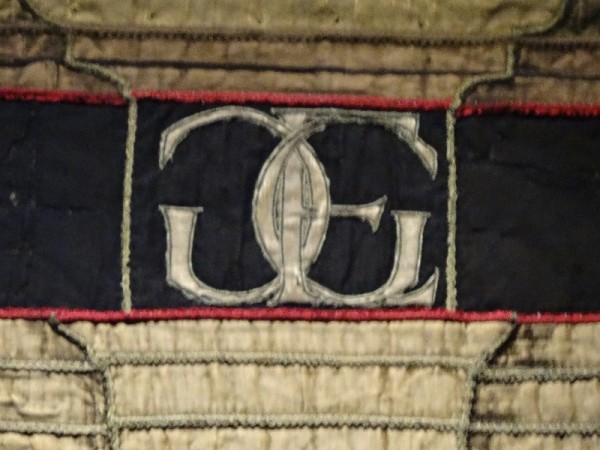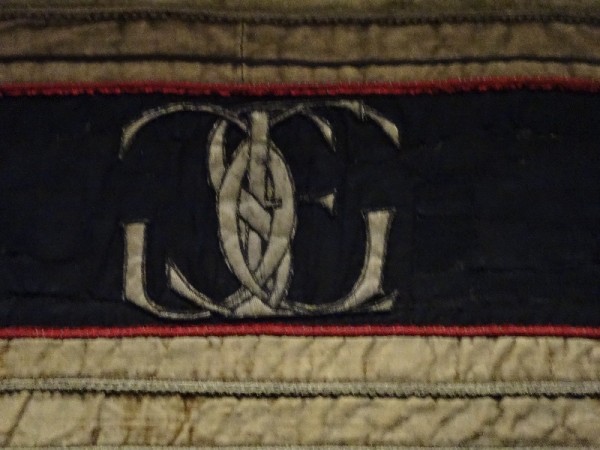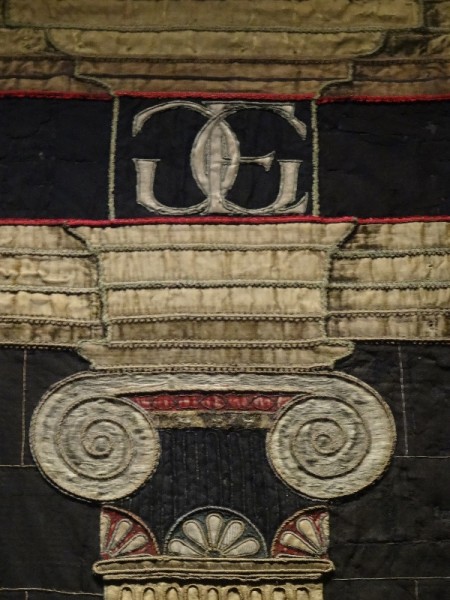We regularly go to Yorkshire to visit family and we like to break our journey and visit National Trust houses on the way. Hardwick Hall is a particular favourite, so we visited it twice last week – once on the way up again on the way down. And my goodness how the property has changed since our first visit a few years ago. Well the house is of course much the same as it has been for centuries but the facilities have been improved beyond belief and are now really excellent. A car park full of cars and yet the house and grounds felt spacious and just pleasantly bustling. On our first visit ( fewer than 10 years ago), both shop and restaurant were crammed into the old kitchens of the house itself and on a rainy day the ochre, brown and cream paint, looming copper cookware hanging from the walls and the historic kitchen furniture seemed rather oppressive and inconvenient rather than charming and fascinating as you would like to think you would be thinking. The quality of the lunch itself has left no imprint on the memory but I feel sure we ate quickly in order to get out and let someone else in the queue come in. The loos, also in the house itself, were few in number and, like the kitchen similarly cold, wet and uninviting.
But now the Trust has opened up the former farm buildings to one side of the house. A barn has been converted to house the café/restaurant, another stone building now houses modern, bright, clean loos and the old stables now house the shop. Through the restaurant a sheltered terrace provides more eating space under giant parasols/umbrellas, while in the grassy courtyard there are plenty of tables for those with their own picnic and still lots of space left over for children to play ball games or just sit and enjoy being in a lovely place teased by the glimpse you get of the top of this fascinating building through the trees. The food is good too.

The newly restored Penelope hanging from Hardwick Hall (The terrible photo was taken from the guidebook – to be re-done … soon)
That Bess loved decorating with initials and monograms is apparent the minute you set eyes on Hardwick for everywhere you look along the top of the building sturdy stonework, made to appear deceptively filigree, dances along the roof line culminating in the repeated letters ES, standing for Elizabeth Talbot, Countess of Shrewsbury. In the house there are initials, monograms, coats-of-arms and heraldic devices everywhere – carved in wood, on plasterwork, on pottery, on furnishings, on paintings. But the funny thing is she dips around in the pool of all her previous initials and, for example, often conjoins the C for Cavendish, after her second husband (deceased) with the S for Shrewsbury (and even the T for Talbot) of her last husband (from whom she eventually separated). The Cavendish stag and Talbot/Shrewsbury- hounds appear when she seeks something more pictorial.
It is thought Bess may have shared thoughts about her husbands with Mary Queen of Scots when Bess acted as her gaoler – the sort that sits and does needlework with you, rather than the sort that jangles keys at you through the bars. As I said in an earlier post on Bess, ‘One panel has ciphers for the names of Barlow, Cavendish and St Loe (Bess’s 3 dead husbands) embroidered on to a pattern of tears falling on to quicklime … the whole surmounted by a latin quotation which translated reads “Tears witness that the quenched flames live.” The phrase, used previously by the widowed Catherine de Medici, Mary’s first mother-in-law, seems likely to have been Mary’s idea.’ Later Bess became disillusioned with Mary, possibly feeling her husband was being attentive to Mary beyond the call of duty and amicable relations ceased. The story does, however, suggest that Bess never forgot her dead husbands and was happy to have reminders of them ever present to her in her house.
I leave you with photos of the newly restored Penelope hanging and in particular the monograms appliquéd there which so interest me. 450 years ago designers working for Bess of Hardwick devised beautiful monograms – don’t they remind you of the logo Chanel later made her own? Then again those Cs could be Gs, so may be Gucci’s took inspiration from Bess too! (Curiously the photo in the slide show about the restoration of the Penelope hanging cuts off the top border with the monograms – fortunately, dear reader, I had my camera to hand to bring these images to you.)
18.8.15 Referring to the last paragraph, I now realise that one of those Cs ifs indeed likely to be G – for George Talbot, her husband, 6th Earl of Shrewsbury, though the C & G do look pretty indistinguishable.




6 Comments
And Bess of Hardwick was such a fascinating character, I’m sure there will be plenty that they will love to tell you!
I hope so. I certainly think there’s plenty about her monograms for copious unpacking (rather than unpicking).
Very interesting Mary. We are planning our trip to the UK next year and Hardwick Hall is on the list so your post is very timely……
Do go to Hardwick, it is stunning on so many counts (and if you can read Mary S.Lovell’s book about her first). Go to the restaurant as near to 12 noon as you can and there shouldn’t too much of a queue – food good too.
I am so pleased you love Hardwick Hall. I am so fortunate as I live near Hardwick and also Bolsover Castle (English Heritage) which is well worth a visit.
I used to live in north Nottinghamshire when I was young and I love the area. Haven’t been to Bolsover for a long time but will go next time we head up to Yorkshire.
Absolutely love Hardwick Hall and reading about Bess.
Thanks for leaving a comment.